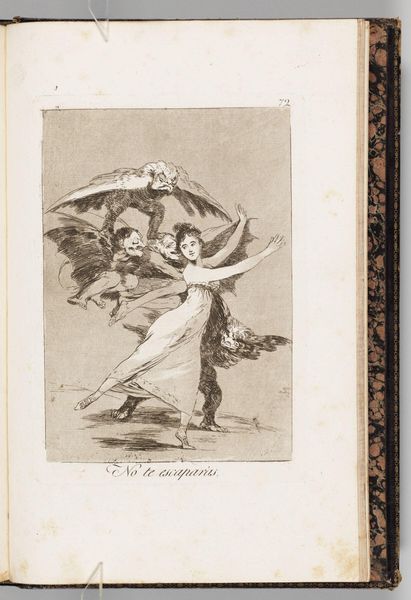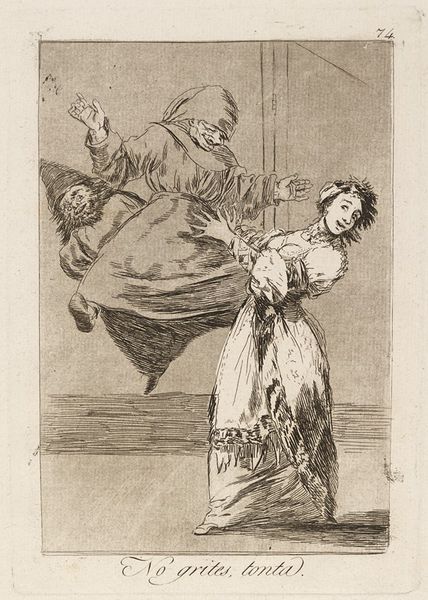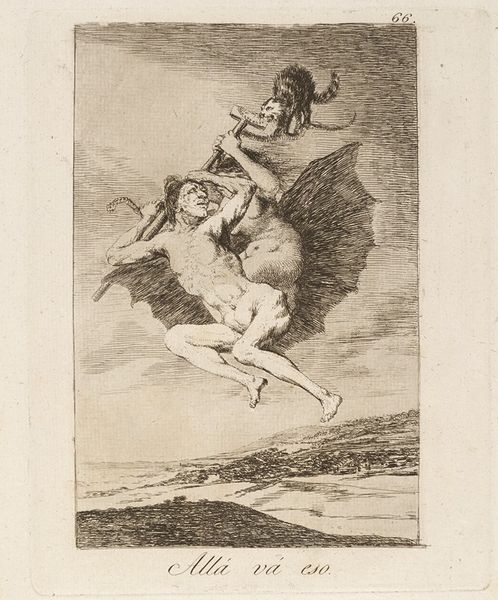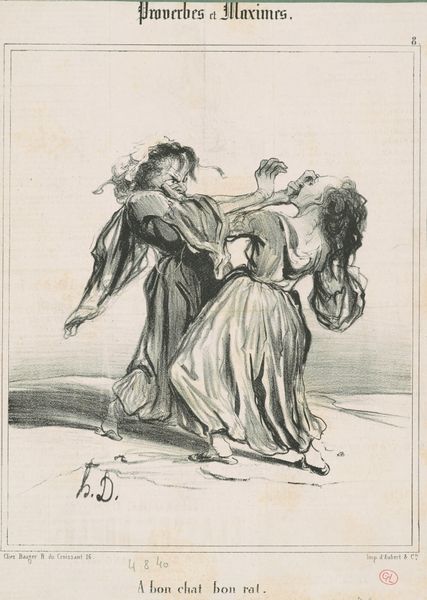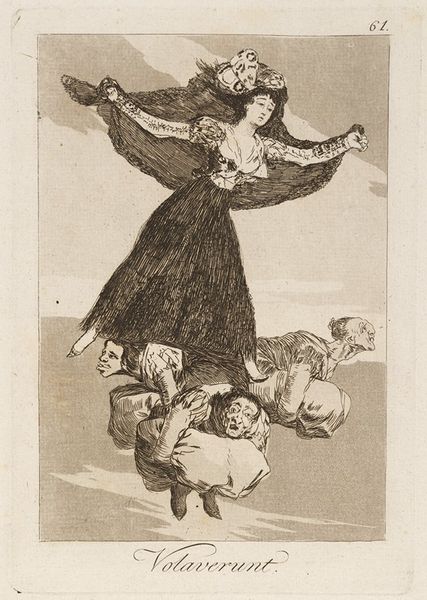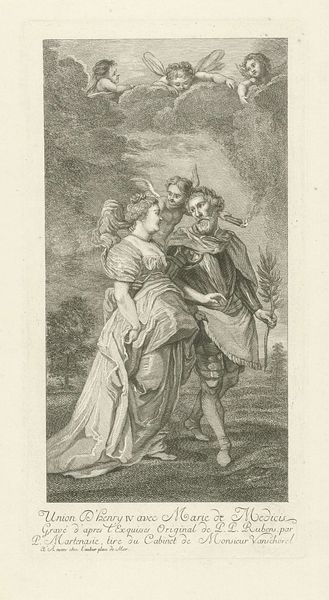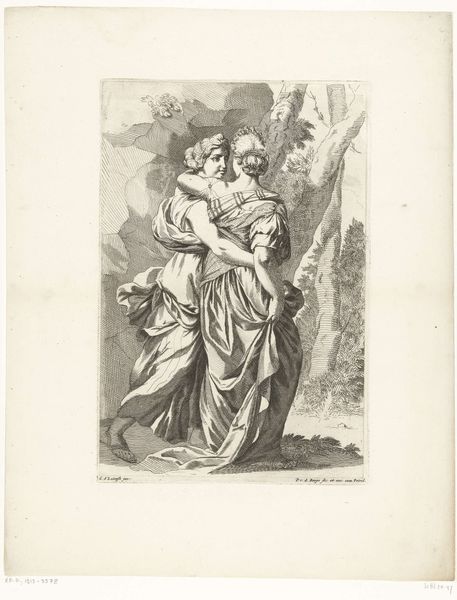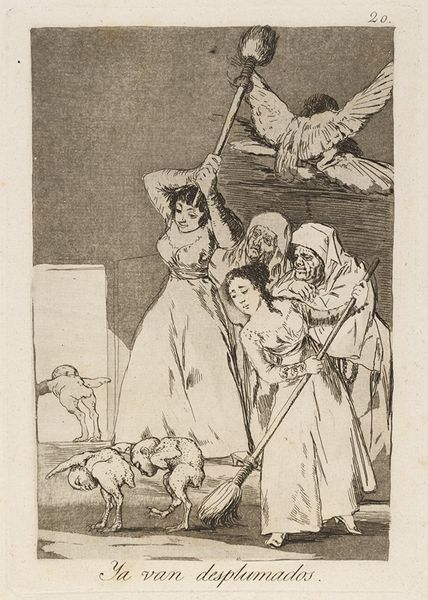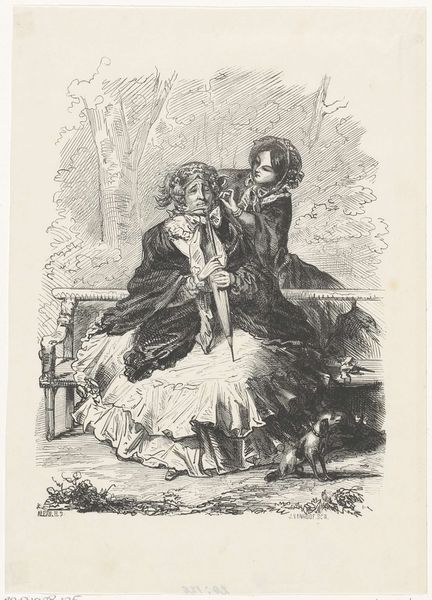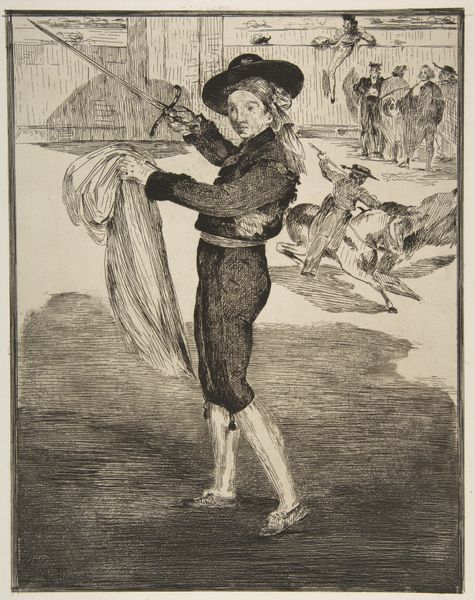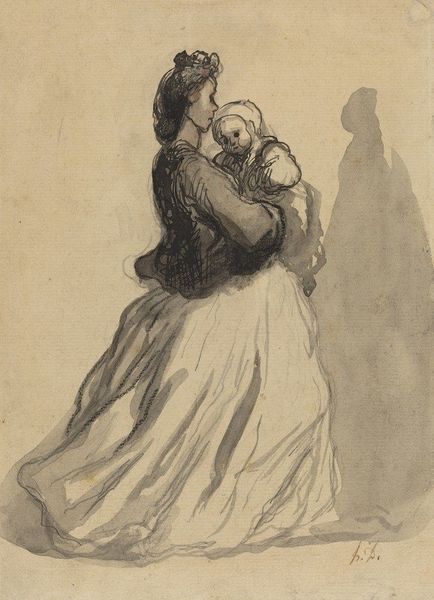
print, etching
#
allegory
#
narrative-art
# print
#
etching
#
figuration
#
romanticism
#
history-painting
Copyright: Public Domain: Artvee
Curator: Immediately striking! The high contrast between the foreground and background creates a dramatic and somewhat unsettling mood. Editor: Indeed. We are looking at Francisco Goya's etching from between 1796 and 1797 entitled "No te escaparás," which translates to "You will not escape." Curator: The figure in the foreground seems trapped or tormented by grotesque figures—vampiric demons maybe, their shadowy forms contrasting sharply with the ethereal woman in a flowing garment. There's almost a balletic quality to her pose. Editor: Absolutely. Goya uses aquatint and etching to construct this fantastical scene. The various lines—some finely etched, others broad—demonstrate expert manipulation of the printing process, giving depth and texture. And let’s not forget that the paper itself would have been specifically selected to take the ink and thus realize the vision, playing an integral role in the social meaning of mass distribution. Curator: It’s unnerving. The body language and expression certainly convey a sense of panic and entrapment. It almost reads as an allegory of inescapable fate or the grip of societal constraints on the individual. It evokes the broader themes that were being explored within Romanticism, like emotion, irrationality, and the supernatural. Editor: Agreed, but the way the image is created speaks to even larger sociopolitical implications. Etchings were not like paintings for the elite. They democratized images, and while Goya obviously wanted to make a visual statement through composition, line and shade, he also engaged with an early version of reproducible media as a commentary on social problems and injustice, right? It implicates a growing audience in the moral decay that the work seems to lament. Curator: A compelling thought, viewing Goya's selection of the print medium itself as a social statement alongside the imagery. The nuances he coaxes from the medium really add to that social context. Editor: Precisely, this work serves to highlight both the individual drama and the means used to make the artwork, adding to our reading. The materiality becomes part of the content, its form intertwined with the social conditions of production, and even consumption. Curator: Thinking about how he achieved these gradations and textures... well, it truly underscores the technical prowess behind what appears, on first glance, to be a scene of raw emotion. Editor: It certainly offers a sobering look into Goya’s vision during turbulent times. Thank you for that perspective.
Comments
No comments
Be the first to comment and join the conversation on the ultimate creative platform.
